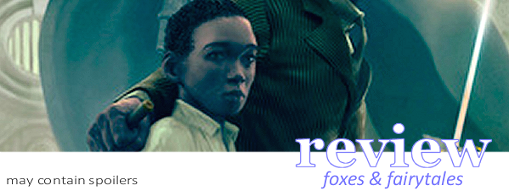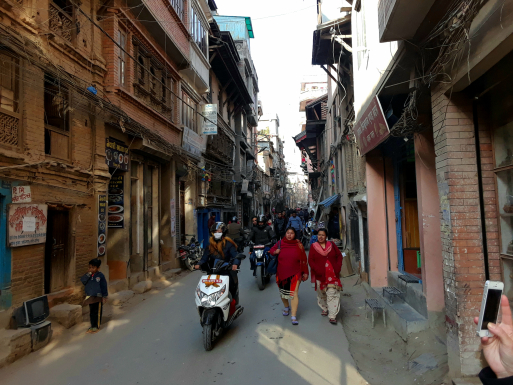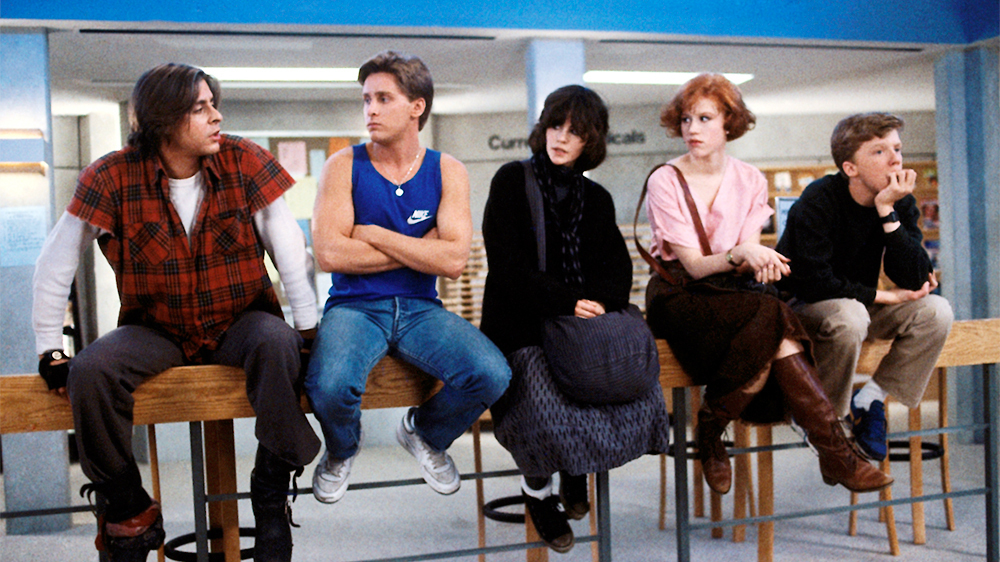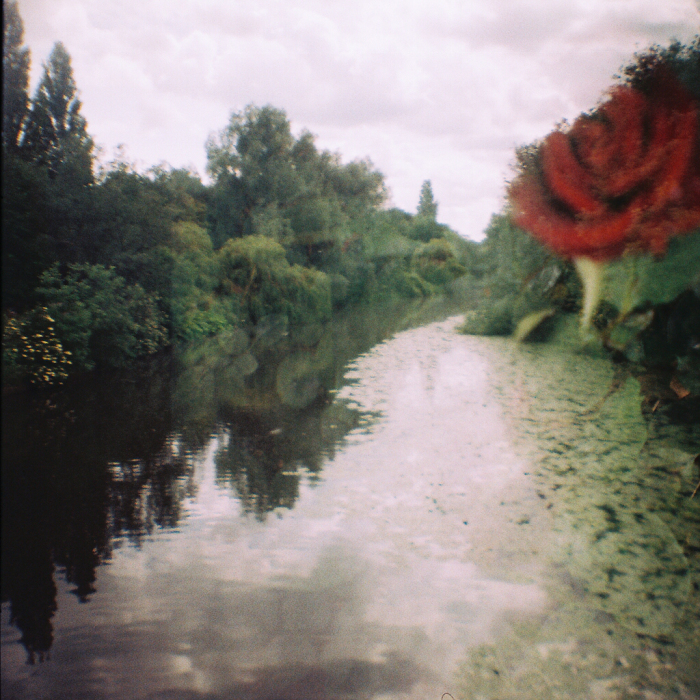The future may not be so dark after all.
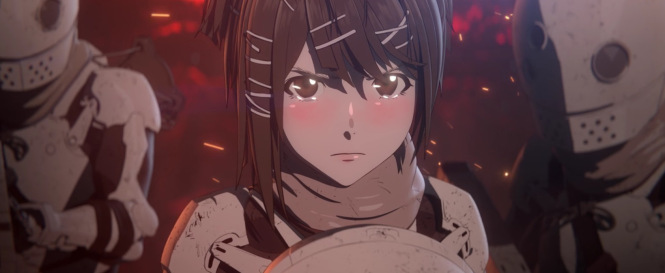
I’ve entertained myself lately with pondering on what the predominant “theme” of the BLAME! film is. The movie, I feel, invites interpretation through a collection of equally valid binaries: life and death, wonder and fear, striving to survive and giving up, faith and doubt, tension and release, possession and need, light and darkness, hope and despair. Together, they form a complex matrix, each pair flowing into the others so that at times they are entirely indistinguishable. However, as is my privilege as viewer and critic, I choose to prioritize one set over the others—hope and despair.
Near the end of the film, there’s a rather unremarkable shot that unexpectedly captivated me. In it, the primary viewpoint character of the film, a young girl named Zuru, is shown in an unexceptional mid-length shot, looking off to the right of the screen. In context, Zuru is watching as the people of her recently destroyed village begin to make preparation to leave their haven of hundreds of years. But, Zuru, having just come through a life-or-death battle with the Safeguard robots tasked with eliminating all humans, is not crying. Instead, her face is set in a confident neutral. And in that moment I thought, “Ah. She’s their future.”
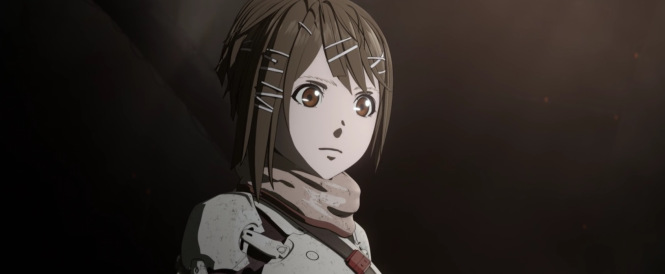
The face of the future.
In many ways, BLAME! seems to be building to that specific moment, which is perhaps an absurd interpretation of a film in which the hero of the story is so obviously Killy, the wandering human searching for the bearers of the Net Terminal gene. But when I saw Zuru in that moment, I immediately recalled the first time we see her face—when she complies with Killy’s demand that she and her friends remove their helmets. That shot, which is the opening image of this article, shows a Zuru teary-eyed with fear, grief, and fading adrenaline, yet still in control of herself enough to make eye contact with her mysterious savior and maintain an expression of resolute defiance. Her will to live is unmistakable.
When it comes to life and death as themes, I’m typically fond of works that treat them as elemental—as a kind of unavoidable, imposing realities of a grounded world. Masahiro Ando’s Sword of the Stranger is perhaps the best example in anime of this for me, its archetypal story, tactile world, and plentiful combat allowing it to distill the act of living down to the fundamental, animal instinct of staying alive. BLAME! has very little of that kind of natural feeling to it, even when it comes to its human characters. The City is a monstrosity of artificiality, the Electro-Fishers literal fugitives in an locale of existence that has rejected them—a truth the audience understands instinctively thanks to the way shot after shot portrays original creator Tsutomu Nihei’s architectural terrors (Nihei served as Creative Consultant for the film) as a hungry abyss of uncontrolled metal, piping, and wires.
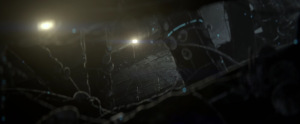
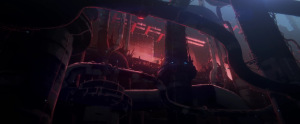
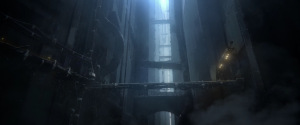
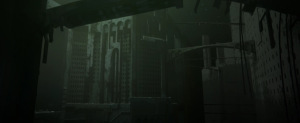
That detachment from a more recognizable, organic environment is why I found myself attracted to the more abstract duality of hope and despair in BLAME!, rather than the more visceral options like life and death. Immediate threats like Safeguard attacks are dispersed throughout the film, with the lingering chafe of worries over incoming, yet still distant starvation insufficient to fill in the gaps. What remains is time. Time to think, to plan… to hope?
When Zuru and her friends sneak out of the village at the start of the film, they are driven by a need for food and a belief that they, with their skills and their desire to help, will be successful in finding a new source of food for their village. From one perspective, it might seem that they are animated by desperation, but the confidence with which Zuru leads her company gives the impression not of hopelessness, but of hope. They trust in themselves and in the potential for achieving their goal. And so they pursue that hope.
This hope—the first kind: which one seizes for oneself—is met with despair.
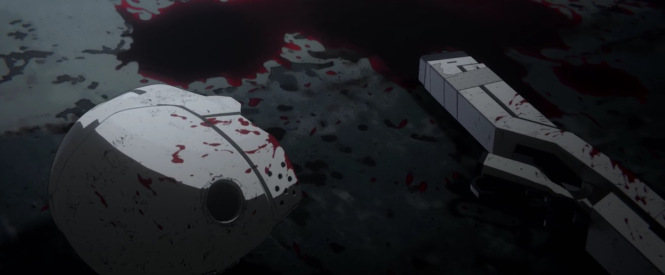
If hope is answered by despair—in the form of a dried up sludge pipe and three of Zuru’s friends dead—then it’s reasonable to ask the question: Was their hope misguided? Were they wrong to hope?
Had things descended into despair following the disaster, BLAME!‘s answer might be rightfully seen as “yes.” But Killy appears, the lone blue light (a color of hope echoed by the pale azure glow of the barrier that keeps the Safeguard from the village and Cibo’s encounter with the Authority) on his equipment a relief against the red destruction left by his weapon. And in doing so, he sets the story on a new track towards a hope that builds on what Zuru’s efforts have begun. Later, as the village begins its journey to a new home, the leader of the village will thank Zuru for setting it all into motion.
The first progression in that motion is a step from out of the mysterious shades of the past, and requires something different of Zuru and the others than her venture out into the City. Killy’s discovery of Cibo and her subsequent offer to help the villagers by means of the automated factory demands trust in the unknown hope she offers—a hope that must contend with doubt and despair. This second hope—hope not understood, but grasped in faith—is spearheaded by Oyassan’s strong desire to find a means of survival for his village and underlined by Zuru’s refusal to stand aside in her village’s time of need.
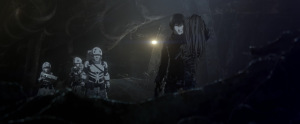
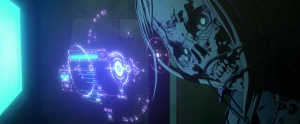
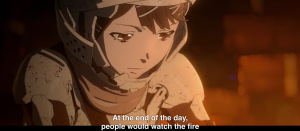
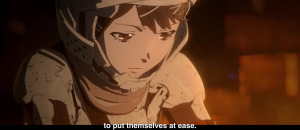
I rather like Cibo’s initial visage, a horrifically degraded remainder of a human being as a symbol for this kind of hope in the unknown. She is so foreign to the Elector-Fishers (a “scientist”), so unlike them with her long age and her vast understanding of this fearsome world and the potential for control she offers. Killy’s strength is of the obvious, easily trusted kind. It is not like that with Cibo or the automated factory.
These unknowns find their foils beside the fire, in the comfort of tradition. “Remember this,” Oyassan says to Zuru. “When Electro-Fishers camp, we always light a fire like this and sleep beside it. It’s the way we’ve always done it.” The fireside scene is a release from the tension of the unknown, and somehow the familiarity brings hope. As the Electro-Fishers remember the past, it acknowledges their present—once the future of their past—and in so doing promises them a future as well.
Once, others sat around the fire. Now we follow in their footsteps, just as those who come after us will follow in ours. Tradition acknowledges the past while setting out a foundation for the future. But I’m getting ahead of myself.
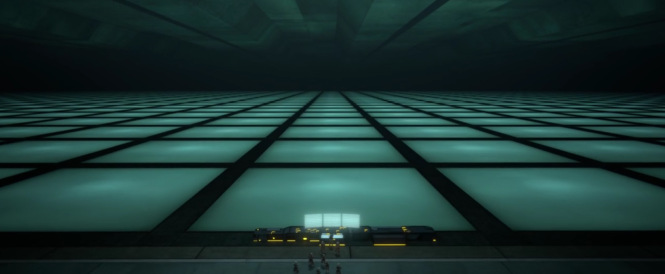
Cibo and her automated factory, the legends of the Net Terminal Gene that Oyassan remembers despite not understanding them, and promises of reconnecting to Netsphere are not the only hopes that the Electro-Fishers are unable to be certain of. There’s also the man who brought these hopes to them: Killy himself. But uncertainty need not always be accompanied by doubt.
Killy is mysterious, but he’s also simple. His goal is as pure and clear as stated: Find the Net Terminal Gene—the salvation of humankind. And as I said before, his strength is easily parseable. Zuru witnesses his effortless destruction of the Safeguard and his ability to walk past Watchtowers without attracting their attention, and he demonstrates repeatedly both his ability to protect himself and his absolute (single-minded, even) commitment to the fulfillment of his mission.
This simplicity is key. Despite the secrets that surround him (although many are revealed throughout the movie), Killy is easy to trust. His ability to enact power in a fundamentally disempowering world and the clarity of his purpose distance him from the other characters, making him into something more than just a man—so that when he parts ways with the villagers at the end of the film, his final line is not merely a statement of purpose… but a promise of hope.
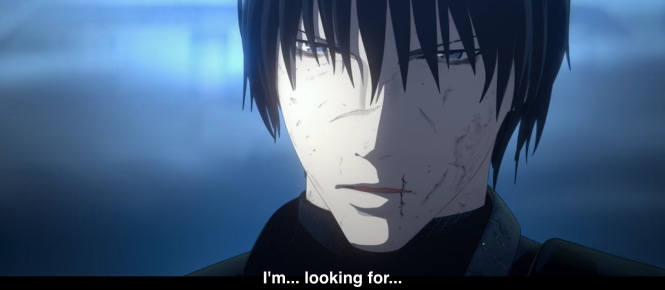
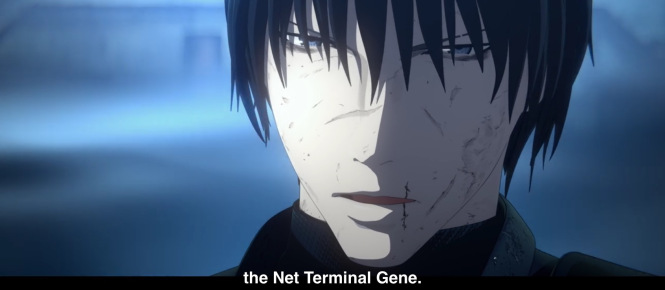
That hope—the hope you place in another—loops back around to the same hope that Zuru represents: the hope for the future.
Hope is an intrinsically forward-looking thing. Although it may draw its power from action, the unknown, the familiar, the past, or another person, hope always exists for things that have not yet happened. It occurred to me as I was watching the final scene of BLAME! that Zuru’s granddaughter’s ending monologue seems rather similar to something you might hear at the end of a superhero movie.
“A long time has passed, but there’s no sign of the city functions returning to normal. I suppose no one with the Net Terminal Gene has been found yet. But I believe. I know that somewhere, he’s still out there in that endless city… continuing his search.”
—Zuru’s granddaughter
“But I believe.” That is something far more powerful than the cliché that the hero who once saved the earth will return again when it is in need, because there is no certainty, no proof. There is no “reason” to believe, yet belief persists. The Net Terminal Gene may not exist, but still Killy searches—and still the Electro-Fishers wait. That’s faith. After the Electro-Fishers moved to their new village, Zuru became their leader in “the new land.” She became the future she strove to find for her people. Faith begets hope, which in turn begets the future.
The world has not changed at the end of BLAME! But someday, it might.
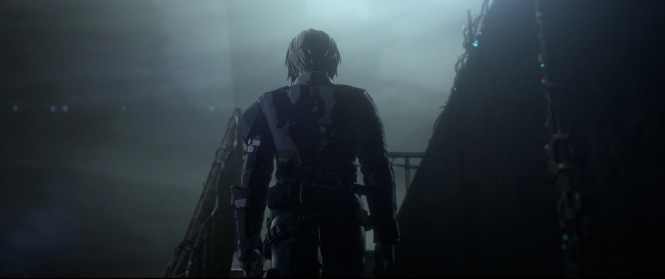
BLAME! is currently available for streaming on Netflix.
Share this:

